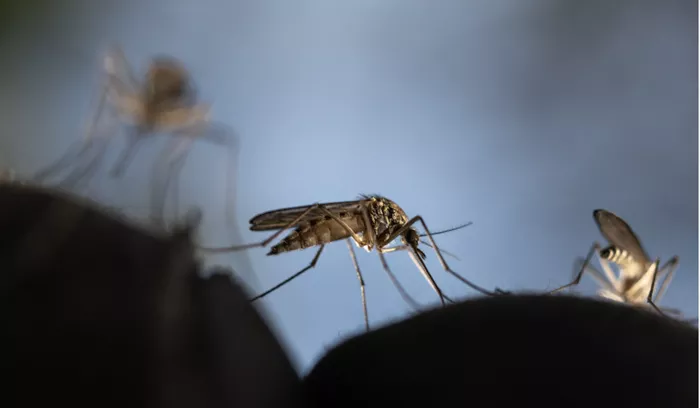Public health officials in Los Angeles have reported the third locally acquired case of dengue fever, as the region grapples with a heatwave and fast-moving wildfires. While these events may seem unrelated, they share a common cause—global warming, which is expanding the reach of mosquitoes carrying infectious diseases.
Rising temperatures, driven by climate change, are creating favorable conditions for disease-carrying mosquitoes to thrive in areas previously too cool for them. As a result, physicians in traditionally mild regions of the U.S. are witnessing an increase in mosquito-borne illnesses, such as Zika virus, West Nile virus, and now dengue fever.
“Warmer weather leads to more standing water, which is a breeding ground for mosquitoes, especially in regions that no longer experience cold winters to kill off eggs and larvae,” said Dr. Kimberly Shriner, Medical Director of Infection Prevention and Control at Huntington Health, affiliated with Cedars-Sinai. “We are seeing more Aedes mosquitoes—the species that transmits dengue—due to rising temperatures.”
Travel and Mosquito Proliferation
Dr. Michael Ben-Aderet, Associate Medical Director of Hospital Epidemiology at Cedars-Sinai, pointed to another factor: increased global travel. He explained that as people travel more frequently, the likelihood of bringing back mosquito-borne diseases increases. When infected travelers return to places like Southern California, they risk spreading the illness to local mosquitoes, which can then infect others.
“Dengue fever is commonly found in tropical regions such as South America, Central America, and Puerto Rico,” Ben-Aderet noted. “Historically, dengue cases in Los Angeles were travel-related, but now we’re seeing patients who have never left the area, meaning they were bitten by local mosquitoes.”
Southern California’s climate—marked by heat, a large population, and extensive travel—creates an ideal environment for dengue transmission.
What Is Dengue Fever?
The Aedes mosquitoes that carry dengue, as well as Zika virus, first appeared in Southern California about 12 years ago. While many people are aware of these mosquitoes’ aggressive biting, few understand the potential severity of dengue fever.
Dengue symptoms can range from mild to severe, with patients often experiencing a high fever and intense muscle pain, earning the illness its nickname, “breakbone fever.” A diffuse red rash that blanches when pressed is also common, along with gastrointestinal issues such as nausea.
A second infection with dengue can be far more dangerous, according to Dr. Shriner, who has treated dengue patients during medical missions to Tanzania. As a hemorrhagic fever, dengue can cause bruising under the skin due to blood vessels leaking.
Treatment for mild cases typically involves supportive care like fluids, rest, and Tylenol, while severe cases may require hospitalization. Though vaccines exist, they are primarily intended for children in regions where dengue is endemic.
A Growing Threat
The rise of tropical diseases in regions like Los Angeles is forcing local doctors to broaden their diagnostic approach. “Today, I have to keep an open mind about the possibility of tropical diseases like dengue,” Ben-Aderet explained.
While local dengue infections remain sporadic and there is not yet a “reservoir” to make the disease endemic to Los Angeles, Ben-Aderet warned that this could change.
Shriner urged calm, stating that diseases like COVID-19 and the flu should remain higher priorities for concern. However, she emphasized that emerging threats like dengue are warning signs of broader changes. “These outbreaks are the ‘canaries in the coal mine,’ signaling that we must take climate change and global health seriously,” she said.
Shriner concluded by calling for collective action: “We live in an interconnected world with a changing climate. All of us are at risk for these diseases, and we must find solutions together.”
Related articles:
Understanding Heat Exhaustion Fever and its Duration
Hot But No Fever: Causes and Strategies
Do You Get a High Fever with Shingles?


